DepthReading
The Sky in the Eyes of People of Qiuci (an ancient state)
The Mid-Autumn Festival, the day for enjoying the moon
and immersing in nostalgia for the past, is drawing near. When you look up at
the vast sky, the moon and millions of stars, what you have known is the stars
are as far as several billion light-years away from Earth for the farthest one.
Like the sun, they are all heavenly bodies; What you have learned is that the
earth orbits the sun and the moon is a satellite revolving around the earth.
Maybe the galaxy and nebula would concurrently pop up in your mind. However,
the ancients, when they looked up at the sky, had a different mentality. Their
views of the world and universe reflected their education background as well as
the sky in their eyes.
For
the people of Qiuci, among the stars, the sun and moon were the brightest, the
former lighting up the day and the latter bringing light to the night. The
ancients thought the moon were the largest star in the sky, surrounded by other
stars. For their parts, full of vitality and as the brightest body at night,
the moon became the object of worship, triggering the birth of a variety of
legends and mythology. From then on, the notion deity of moon, stories of
Chang’e (goodness of the moon) flying to the moon, and Wu Gang (god of the
moon) felling the osmanthus trees spread far and wide. In the culture of both
(Picture A)
The sky and universe in the eyes
of the people of Qiuci was painted intensively in the picture “scope” on the
central-mid-ridge of vaulted ceiling in the main chamber of post cave in the
center of the
(Picture B)
(Picture C)
“Scope” justifies the identity of Qiuci as the convergent place for cultural
exchanges between the east and the west. The legend of a rabbit on the moon
comes from Ask the Heaven of The Poetry of Chu that “What is the moon’s
property makes it turns from crescent to full? What will bring to its merit to
carry a rabbit?” The white rabbit, which happens to be that of the moon of
Qiuci, represents an auspicious sign. The wind god holding cloths date back to
the ancient Greek, turning up in The Birth of Venus, a renowned oil painting of
the Renaissance, in which next to the right of Venus, the god, exhaling, in
blue cloths, is the wind god in the culture of Greek. The image of the wind god
of Greek, after diffused via the
(Picture D)
(Picture E)
There was a concept of constellation in Qiuci. A particular “Scope” on the
vaulted ceiling of the 198th cave A at Kezier in Xinjiang province
comprises the depictions of sheep, cattle and joint man, part of the latter
missing. Foreign scholars hold that it is the theme relating to the 12 signs of
the zodiac for the sheep is equivalent to Aries, cattle to Taurus and joint man
to Gemini. Such theme of “Scope” is the unique one found in the caves of
Kezier. Recorded in order in clay tablets for astrology, the creation of the 12
signs of the zodiac arises from the culture of
(Picture F)
During the Anxi Duhufu of Tang Dynasty (year
of 640), the traditional “Scope” changed a lot as a number officials and
soldiers of Hans, monks and laymen stationed in Qiuci. Han people tend to
admire and yearn for the
The fresco
of Qiuci offers an insight into the world of ancients that their knowledge of
the sky and the universe are based on special mentalities and culture. The sky
in their eyes linking to a mysterious religion rite led to their depictions of
flying sages, wind god, rain god, and birds with golden wings etc, with the
running sun and moon as background, on the top of the cave——the location of the
sky-——as the particular “Scope”, conveying their understandings and
imaginations of the sky.
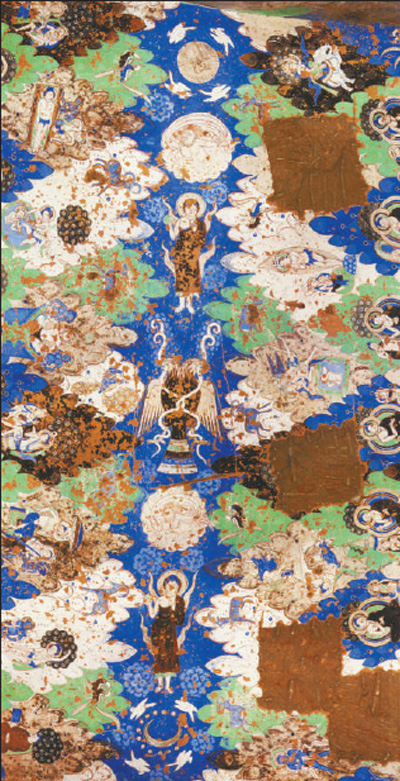
A克孜尔第三十八窟主室券顶天相图。
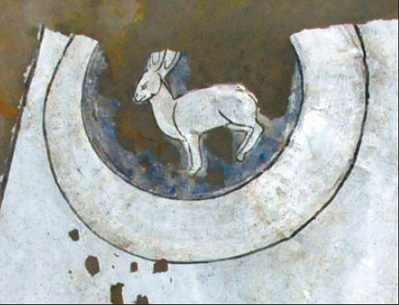
B克孜尔新一窟后室券顶月中兔。
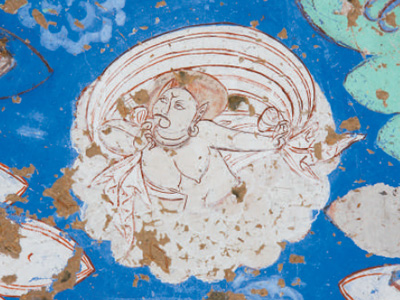
C克孜尔第三十八窟主室券顶天相图中的风神。
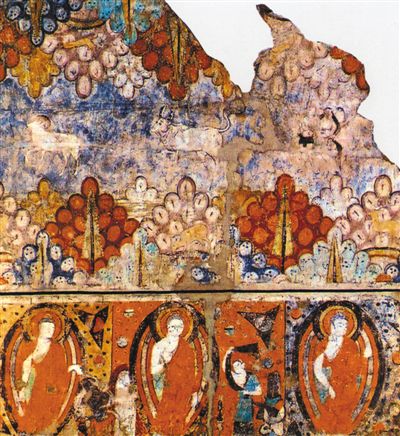
D克孜尔第一九八A窟券顶的黄道十二宫。
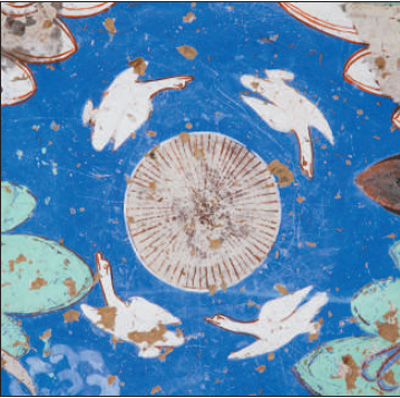
E克孜尔第三十八窟主室券顶天相图中的太阳。
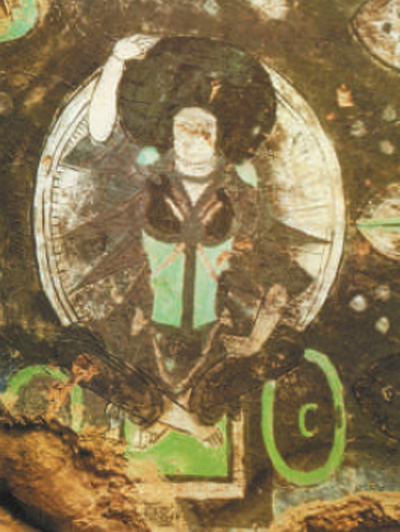
F
Translated by IICC-X Tian Meng
Category: English
DepthReading
Key words:
